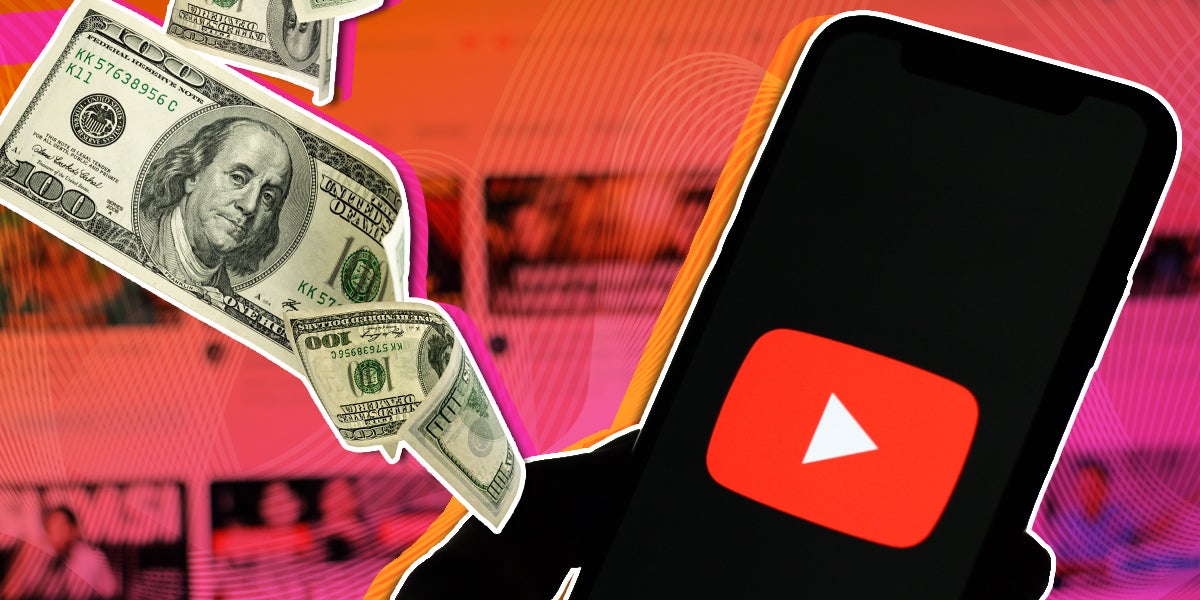
Last year, a few months after he took over the reins at YouTube from departing CEO Susan Wojcicki, Neal Mohan invited Miles Kruppa of The Wall Street Journal to the company’s HQ in San Bruno, California, for an interview. The ensuing profile spends a lot of time on Mohan – a father of three – getting to know prominent creators and generally soaking up YouTube culture. At one point, he muses about a recent trip to the Coachella music festival, which he describes as “a physical representation of what happens on YouTube every single day,” whatever that means.
A few paragraphs down from the Bad Bunny anecdotes, Kruppa delves into Mohan’s background before taking the role of CEO. Unsurprisingly, he came up through the field of online advertising and marketing. A Stanford grad, Mohan’s first major tech role was at DoubleClick, which helped businesses track how their internet marketing campaigns were performing. When DoubleClick was acquired by Google for $3.1 billion in 2007, Mohan started working for Wojcicki in the company’s advertising product division. Within six years, he doubled his division’s annual revenue; it hit $14 billion in 2014 under his watchful eye.
Prior to taking over as YouTube’s CEO, Mohan’s focus had largely been shifting ad dollars away from conventional Hollywood and media companies and towards Google’s video platform. That strategy included the introduction of cable-replacement service YouTube TV. Which allows consumers to cut the cord and move their cable programming over to streaming. Along with a push against disinformation and other kinds of divisive content that are generally unappealing to advertisers (though this remains a semi-constant headache).
The WSJ piece closes with this quote from Mohan: “If you really want to focus on long-term success of advertisers, you better focus on the long-term success of creators and viewers.” It’s a nice thought, an ideal that brings together two seemingly disparate threads. Mohan here suggests that it’s possible to both focus on the culture that has defined YouTube, and what’s best for creators in general, while also relentlessly maximizing revenue and profitability at every turn.
A Relentless Focus on Ad Revenue
While this may be theoretically possible, a number of stories this week make it clear that ad dollars remain priority #1 for Mohan and Google. According to the company’s latest earnings report YouTube brought in $8.1 billion in ad sales in the first quarter of 2024, setting a new all-time Q1 record. That’s a 21% jump over their first-quarter revenue from just one year ago, and it exceeded Wall Street’s expectations. That number doesn’t even include subscriptions to YouTube TV or YouTube Premium or YouTube Music. That’s just from selling ads.
During last week’s earnings call with investors, Google executive Philipp Schindler also noted that YouTube will start serving unskippable ads to viewers whenever they pause videos. They’re already testing the system with some videos playing on TVs. Is this really focusing on the long-term success of viewers? Or is this purely about making more money from the same content?
Additionally, Google talked up a new collaboration with entertainment brands like NBCUniversal, Warner Bros. Discovery, and Paramount through their Display & Video 360 (or DV360) platform. The system functions as basically a real-time partly-automated digital ad exchange, which aligns the companies’ independent data along with Google’s to allow for maximum ad targeting. Basically, these companies will share all the information they have on your likes and viewing habits, so they can most effectively serve you the right commercials.
Key Takeaways for Creators
YouTube’s focus on its TikTok competitor Shorts has had similar negative implications for many creators. It’s more challenging to build relationships with fans over time when you’re exclusively producing highly clickable and shareable short videos. In addition, it’s a greater challenge to earn consistent revenue on quick viral clips than with longer YouTube videos that also have more opportunities for ad breaks.
It’s a new world, with new rules and principles that revenue-minded YouTube creators have to keep in mind. While success on YouTube was once about organically growing a fanbase via channel subscriptions – or even fan bases on third-party social media apps that would point back to YouTube videos – making money there now is all about consistency and clickability. Some suggestions:
YouTube making a lot of money isn’t necessarily the worst thing for creators on YouTube. After all, they get to share in a decent chunk of those ad dollars. But it’s worth remembering that, despite all of the high-minded rhetoric about communication and community. YouTube is relentlessly focused on selling you trucks and sodas and movie tickets and clothes, more than, say, financial opportunities or inspiration or personal affirmation.




